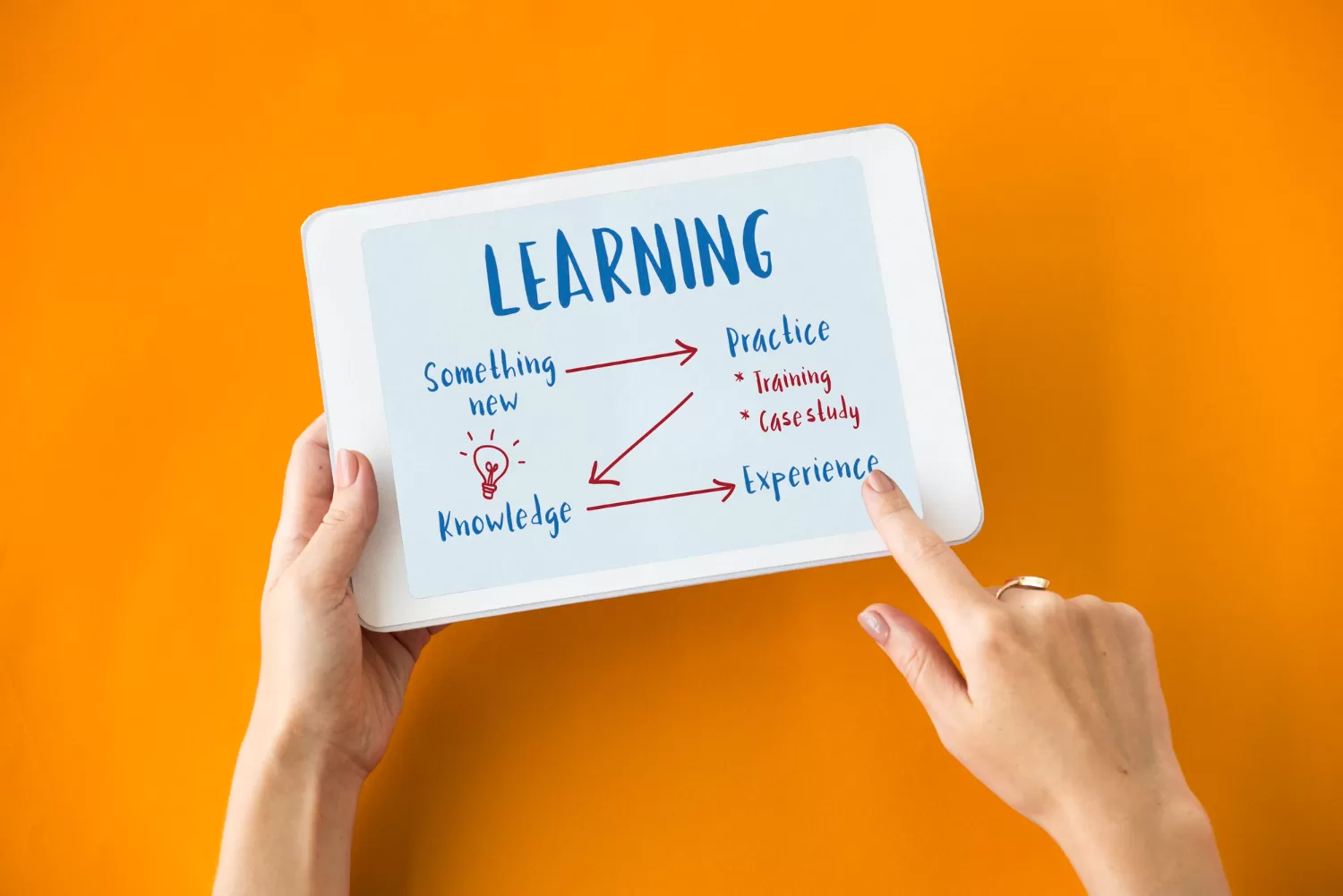Mastering Advanced Communication Skills for Lasting Success
In today’s fast-paced and interconnected world, communication skills have evolved into a critical factor that determines both personal and professional success. While basic communication skills are a must, mastering advanced communication skills can set individuals apart by allowing them to navigate complex conversations, influence outcomes, and build lasting relationships.
In this blog post, we will explore advanced communication skills from various angles, including verbal, non-verbal, emotional, and technical aspects. We’ll dive into how to develop and enhance these skills, applying them in a professional setting to maximize impact and effectiveness.
Table of Contents:
- 1. Understanding Advanced Communication Skills
- 2. The Components of Effective Communication
- 3. Verbal Communication: Articulation, Tone, and Clarity
- 4. Non-Verbal Communication: Body Language and Beyond
- 5. Emotional Intelligence: The Heart of Advanced Communication
- 6. The Role of Active Listening in Communication
- 7. The Science of Persuasion: Influence and Negotiation Skills
- 8. Communicating in the Digital Age: Leveraging Technology
- 9. Cross-Cultural Communication: Bridging Global Barriers
- 10. How to Continuously Improve Your Communication Skills
1. Understanding Advanced Communication Skills
dvanced communication skills go beyond the basics of transmitting and receiving messages. They involve nuanced, strategic, and effective communication techniques that are essential in professional and high-stakes environments. These skills allow individuals to:
- • Convey complex ideas clearly and concisely.
- • Build rapport and trust in relationships.
- • Negotiate and resolve conflicts effectively.
- • Lead teams and motivate people toward a common goal.
- • Adapt communication stylesto diverse audiences and situations.
While foundational communication covers speaking clearly and listening attentively, advanced skills require a deeper understanding of human behavior, emotional intelligence, and the psychology of influence.
2. The Components of Effective Communication
Effective communication is a balance of several critical elements. These include:
- • Verbal Communication: The content of what you say, the choice of words, and how well you articulate your ideas.
- • Non-Verbal Communication: Your body language, facial expressions, gestures, posture, and eye contact.
- • Tone and Inflection: How you say something can often be more important than what you say.
- • Active Listening: The ability to truly hear and understand the other person’s message.
- • Emotional Intelligence: Recognizing and managing emotions in yourself and others to create better interactions.
Understanding these components is the foundation of advanced communication techniques, allowing for more sophisticated interactions and influence in professional settings.
3. Verbal Communication: Articulation, Tone, and Clarity
Verbal communication is more than just words; it’s about the message that the audience perceives. Here are key strategies to enhance your verbal communication skills:
a. Clarity and Brevity
Clear communication ensures that your message is understood as intended. Clarity is often achieved by:
- • Avoiding jargon or technical terms that may confuse your audience.
- • Using simple and precise language to convey complex ideas.
- • Eliminating filler words (“uh,” “like,” “you know”) that dilute the impact of your message.
b. Tone and Inflection
Your tone of voice plays a crucial role in how your message is received. A well-modulated tone conveys confidence and professionalism, while improper tone can lead to misunderstandings or come across as insincere.
- • Use a positive and assertive tone when presenting ideas or suggestions.
- • Match your tone to the situation: a softer tone when providing feedback, or a firmer tone when giving instructions.
- • Inflection adds emphasis to key points, helping to maintain your audience’s attention and conveying the importance of certain ideas.
c. Articulation
Articulating your words clearly is essential in verbal communication. Ensure that your speech is neither too fast nor too slow, and avoid mumbling or slurring words. Practice techniques like:
- • Enunciating each syllable clearly.
- • Taking brief pauses to allow your listener to process the information.
- • Emphasizing key points with deliberate articulation to ensure your audience understands what’s most important.
4. Non-Verbal Communication: Body Language and Beyond
Non-verbal communication can reinforce or contradict what you are saying verbally. It accounts for a significant portion of how people perceive your message and involves elements such as:
- • Facial expressions: Smiling, frowning, or raising an eyebrow can speak volumes.
- • Gestures: Using hands to emphasize points can help reinforce your words, but overuse can be distracting.
- • Posture: Sitting or standing up straight shows confidence, while slouching may indicate disengagement.
- • Eye Contact: Making eye contact demonstrates attentiveness, trustworthiness, and engagement. Too much eye contact may feel intimidating, while too little can make you appear disinterested.
How to Master Non-Verbal Communication:
- • Be aware of your body language: Practice in front of a mirror or record yourself to see how your gestures and posture come across.
- • Use facial expressions to match your message: Smiling when appropriate and showing empathy through your facial cues can strengthen rapport.
- • Ensure alignment between verbal and non-verbal signals: When these signals contradict each other, it leads to confusion. For instance, if you’re saying “I’m happy to help” but have crossed arms and a flat expression, your audience may doubt your sincerity.
5. Emotional Intelligence: The Heart of Advanced Communication
Emotional intelligence (EQ) is the ability to recognize, understand, and manage your own emotions and the emotions of others. High EQ is fundamental to advanced communication because it helps create empathy, manage conflict, and foster trust.
Key Aspects of Emotional Intelligence:
- • Self-awareness: Being conscious of your own emotions and how they affect your behavior.
- • Self-regulation: Managing your emotions so they don’t negatively impact the conversation.
- • Empathy: Understanding and being sensitive to the emotions of others.
- • Social Skills: Building relationships, influencing people, and managing conflict.
By integrating EQ into your communication style, you are better able to read emotional cues, anticipate reactions, and tailor your message in a way that resonates with your audience.
6. The Role of Active Listening in Communication
Active listening is not just hearing but fully understanding and engaging with what the speaker is saying. This is a cornerstone of effective communication, especially in leadership, customer service, and negotiation contexts.
Techniques for Active Listening:
- • Paraphrasing: Summarizing what the speaker has said to confirm understanding.
- • Asking clarifying questions: These ensure you’ve grasped the details and demonstrate genuine interest.
- • Providing feedback: Offering verbal or non-verbal feedback (e.g., nodding) shows engagement.
- • Avoiding interruptions:Let the speaker finish before formulating a response.
Advanced communicators leverage active listening to ensure that their responses are thoughtful, relevant, and considerate of the other person’s point of view.
7. The Science of Persuasion: Influence and Negotiation Skills
Persuasion is the ability to convince others to see things your way, while negotiation skills involve reaching mutually beneficial agreements. In both, communication is key.
Principles of Persuasion (Based on Dr. Robert Cialdini’s Work):
- • Reciprocity: People feel obliged to return favors. Offer something valuable, and they’ll be more open to your message.
- • Consistency: Encourage small commitments upfront. People like to be consistent with their past behavior.
- • Authority: Position yourself as an expert in the subject matter to gain credibility.
- • Scarcity: Highlighting what might be lost can prompt quicker decision-making.
In negotiations, success often hinges on clear, empathetic communication. Ensure your language is assertive yet flexible, and always seek to understand the needs of the other party before presenting your case.
8. Communicating in the Digital Age: Leveraging Technology
With the rise of digital communication platforms like email, video conferencing, and instant messaging, the way we communicate professionally has fundamentally changed. Here are some key strategies to enhance digital communication:
- • Use concise language: In digital formats, people’s attention spans are shorter. Get to the point quickly.
- • Choose the right medium: Complex issues might require a video call, while quick questions can be handled via email or instant messaging.
- • Mind your tone: Digital messages lack non-verbal cues, so be mindful of how your words may be interpreted.
- • Stay organized: Manage your communication threads and follow up regularly to maintain clarity in ongoing conversations.
9. Cross-Cultural Communication: Bridging Global Barriers
In a globalized world, cross-cultural communication is essential for collaboration across borders. Misunderstandings often arise from differences in language, non-verbal cues, and cultural norms. Advanced communicators must:
- • Adapt communication styles to the cultural context.
- • Be aware of cultural sensitivities: Different cultures may have varying attitudes toward hierarchy, formality, and time management.
- • Learn key phrases or greetings in the language of the people you’re communicating with.
- • Practice cultural empathy: Take time to understand the perspectives and values of your audience.
10. How to Continuously Improve Your Communication Skills
Even with advanced skills, there is always room for growth. Here are a few strategies to ensure continuous improvement:
- • Seek feedback: Ask colleagues or mentors for input on how you can improve your communication skills. Constructive feedback provides invaluable insights into areas you might not be aware of and can help refine both verbal and non-verbal techniques.
- • Practice regularly: Like any skill, communication requires practice. Engage in conversations, presentations, and negotiations regularly to keep your abilities sharp. Volunteering to lead meetings, workshops, or even social gatherings provides opportunities to test and improve your communication skills.
- • Engage in self-assessment: Reflect on your interactions by asking yourself questions such as: Did I convey my message clearly? How well did I handle feedback? Did my non-verbal cues match my words? Self-awareness is crucial for continual growth.
- • Learn from others: Observe and learn from skilled communicators. Whether it’s a TED Talk speaker, a colleague, or a mentor, analyze how they structure their language, use tone, and integrate non-verbal cues. Adapt the techniques that resonate with you.
- • Develop emotional intelligence (EQ): Since emotional intelligence is integral to advanced communication, invest in your emotional growth. Engage in practices like mindfulness, meditation, or journaling to increase your self-awareness and empathy.
- • Expand your vocabulary: Increasing your vocabulary gives you more precise tools to express complex ideas. Use reading as a way to not only learn new concepts but to improve your articulation and command of language.
- • Stay updated on communication technologies:As digital communication evolves, keeping up with new platforms and tools is crucial. Whether it’s new video conferencing features, messaging platforms, or collaboration tools, ensure that you are proficient in using these to communicate effectively.
Conclusion
Mastering advanced communication skills is an ongoing journey that requires a combination of practice, self-awareness, emotional intelligence, and technical knowledge. In a world where effective communication is more important than ever, honing these skills can help you stand out, build better relationships, lead teams, and navigate the complexities of the modern professional environment.
Whether you’re a leader aiming to inspire your team, a professional seeking to negotiate better deals, or someone who simply wants to connect more deeply with others, advanced communication will give you the tools you need to succeed. By continuously refining your abilities and staying adaptable to new communication trends, you’ll not only improve your personal interactions but also enhance your professional impact.
The ability to communicate effectively is no longer just about speaking clearly or writing well; it’s about crafting messages that resonate, building rapport with diverse audiences, and adapting to the ever-changing landscape of human interaction. Investing in advanced communication skills is, without a doubt, one of the most valuable steps you can take toward personal and professional success.
Call to Action:
Want to take your communication skills to the next level? Start by integrating these advanced techniques into your daily routine and continuously seek opportunities to refine them. Explore corporate training programs tailored to advanced communication skills, and see how you can become an even more effective communicator in the workplace. If you’re interested, reach out to our team today to learn more about how you can enhance your communication and leadership abilities through our personalized training sessions.





